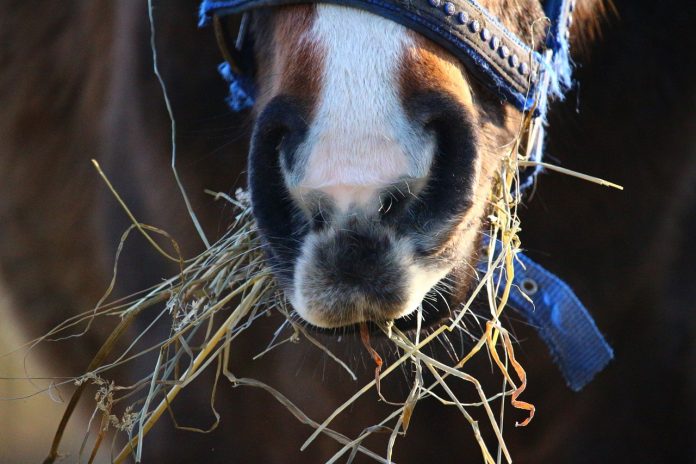Laminitis unfortunately is common in equine and, in worse-case scenarios, can lead to a horse being euthanized. It is painful and can cause lameness but is a preventable condition. Grazing forages is one of the most reported causes of laminitis in the United States.
What, though, causes laminitis in grazing horses? It is often affiliated with feeding too much grass that contains high amounts of fructans, starches and simple sugars, which together form the non-structural carbohydrates. Grass species that tend to have higher sugar content include perennial ryegrass, Kentucky bluegrass and timothy.
Detection
Detecting laminitis in its early stages is key for management of the disease. During the developmental stage, or within 60 hours of grazing, a horse may not move as much as usual, show indications of discomfort or even display some lameness. In the acute stage, hooves will become hot, the horse may lay down and pain will be evident.
Chronic laminitis is the final stage. Here, the hoof essentially collapses. If a horse is showing any of these symptoms from developmental to chronic stages, it is time to call the vet. Many cases end with no long-term issues. However, if the laminar attachments do not heal entirely following surgery, treatment options will be limited.
Prevention
To prevent equine from consuming excess grasses that produce a lot of these carbohydrates, use hay that is lower in these values. How do you know these values? Through forage testing.
On forage results, pay attention to water-soluble carbohydrates and starch. Adding water-soluble carbohydrates to starch will give you non-structural carbohydrates if not already listed on the report. The non-structural carbohydrates should be less than 12% for equine that are more susceptible to laminitis. If values are greater than 12, there is an increased risk that horses that are fed that hay will develop laminitis while grazing.
One way to prevent laminitis is to limit grazing to 15 minutes, especially during the spring months. Do this for the next three to five days, and then increase the time by another 15 minutes. Continue repeating this process to acclimate horses to the ration change to give their gut microbes time to adapt. Avoid grazing after the first freeze in autumn.
Early mornings are the best times to graze as this is when non-structural carbohydrates are the lowest. The highest amounts of sugars occur mid-day through the evening hours.
Use feeds that are low in non-structural carbohydrates before grazing to prevent overeating. If forages with high non-structural carbohydrates are suspected in the field, restrict equine to dry lots. A grazing muzzle can also be used to prevent feeding in pastures.
Do not provide access to fresh-cut grass, as sugars are mostly stored at the base of the plant. Overgrazing increases the risk of animals feeding on forages too close to the base of the plant.
If using hay that tests high in non-structural carbohydrates, it can be soaked for approximately an hour in tepid water, rinsed and air dried. Only feed once hay is dry. This method can reduce soluble sugars by up to 30%.
The best prevention options and management strategies begin by having a relationship with a veterinarian and a farrier. Make sure to build these relationships before, not after, a problem surfaces.
A couple of great resources that expand on this information include “A Horse Owner’s Guide to Pasture-Associated Laminitis,” available from Oregon State University Extension at extension.oregonstate.edu/catalog/pub/em-9354-horse-owners-guide-pasture-associated-laminitis and “Managing Forage Carbohydrate Content,” available from University of Minnesota Extension at extension.umn.edu/horse-nutrition/managing-forage-carbohydrate-content.













